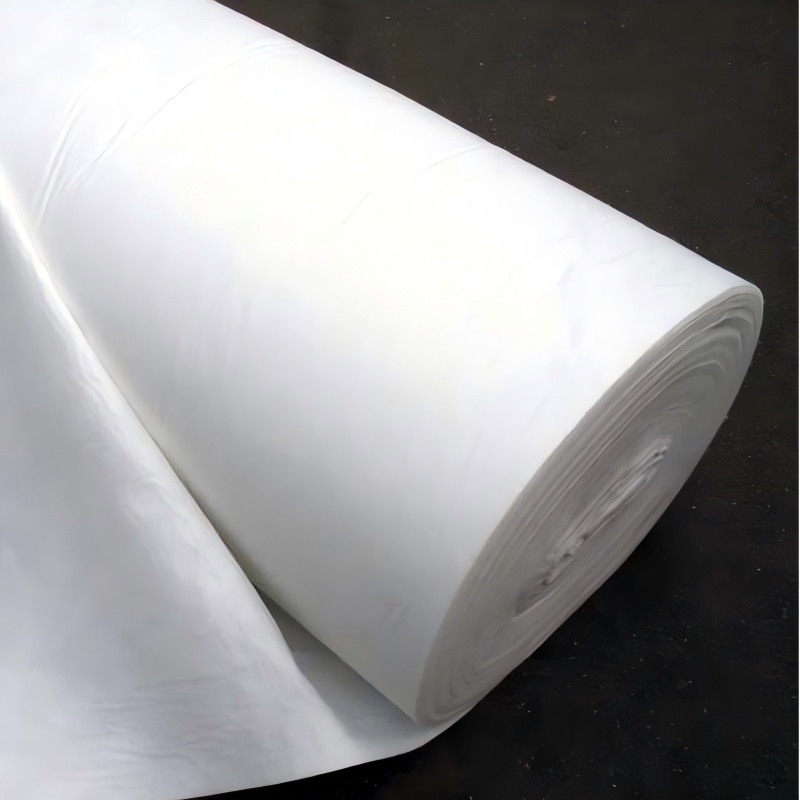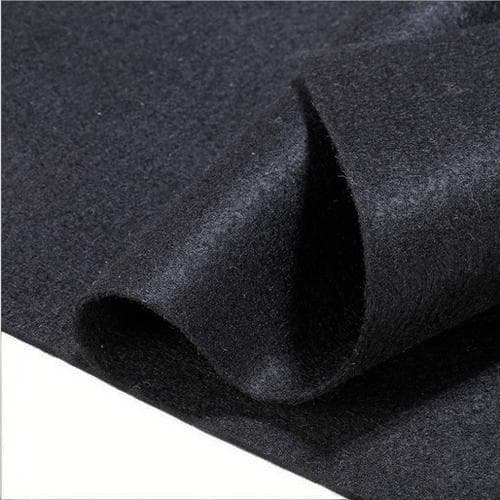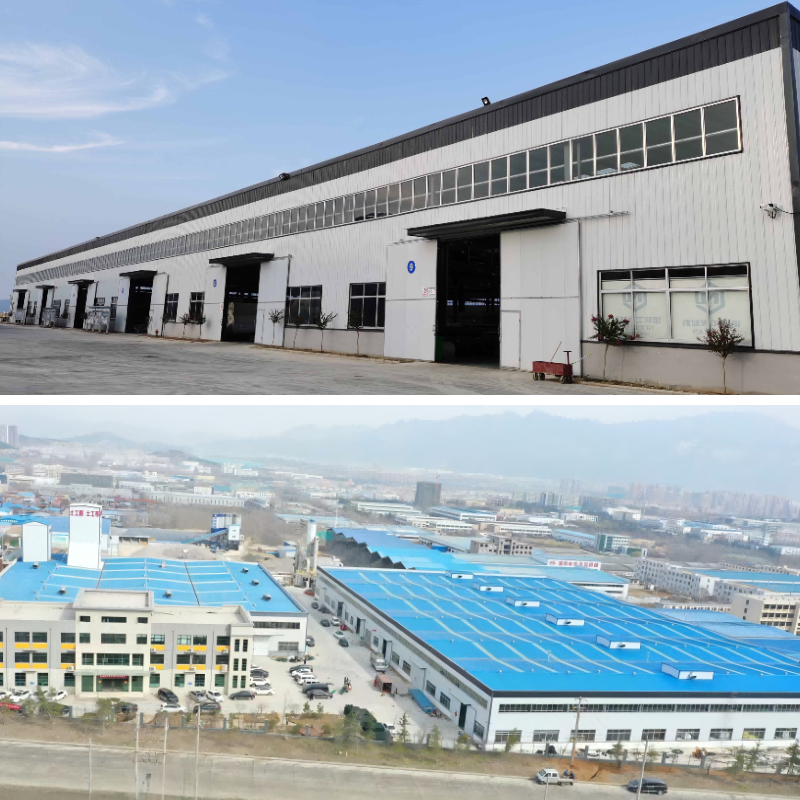Polyethylene Woven Geotextile Fabric
High strength tensile resistance: Using polyethylene weaving technology, it has high fracture strength and can effectively resist soil pressure and external tension, maintaining structural stability for a long time.
Excellent water filtration and vapor permeability: The fabric has uniform texture and controllable pores, which can quickly remove excess water from the soil, while preventing sediment loss and maintaining soil permeability balance.
Weather resistant and corrosion-resistant: It has excellent resistance to ultraviolet rays, acid and alkali, and microbial erosion, and is not easily aged or degraded in outdoor or harsh soil environments, extending the service life of the project.
Lightweight and easy to construct: The product is lightweight, flexible, and easy to cut, transport, and lay. It can adapt to complex terrains and improve engineering efficiency.
Product Introduction:
Polyethylene Woven Geotextile Fabric is a functional engineering material made from high-quality polyethylene through a special weaving process. With its scientific structure and excellent properties, it has become a key supporting product in fields such as civil engineering, water conservancy construction, and ecological restoration. It has four core advantages: high strength, tensile resistance, water filtration, steam permeability and sand prevention, weather resistance and corrosion resistance, and light and easy construction. It can not only carry engineering loads, resist external impact to maintain structural stability, quickly drain accumulated water and prevent sediment migration, but also resist aging and corrosion in harsh environments such as open air, acid and alkali, and seawater.
It can also adapt to complex terrain due to its light weight and good flexibility, reducing construction costs and difficulties. In practical applications, this product can not only solve pain points such as traditional engineering roadbed settlement, slope erosion, and structural leakage, but also achieve "engineering reinforcement+ecological restoration" synergy in scenarios such as river slope protection and mine reclamation. Currently, it has been widely used in fields such as highway and railway roadbed, water conservancy and flood control, construction and municipal engineering, agricultural irrigation, port and waterway, providing solid guarantees for the safety, stability, and durability of various projects.
Product Parameters:
project | metric | ||||||||||
Nominal strength/(kN/m) | |||||||||||
6 | 9 | 12 | 18 | 24 | 30 | 36 | 48 | 54 | |||
1 | Longitudinal and transverse tensile strength / (kN/m) ≥ | 6 | 9 | 12 | 18 | 24 | 30 | 36 | 48 | 54 | |
2 | Maximum elongation at maximum load in longitudinal and transverse directions/% | 30~80 | |||||||||
3 | CBR top penetration strength /kN ≥ | 0.9 | 1.6 | 1.9 | 2.9 | 3.9 | 5.3 | 6.4 | 7.9 | 8.5 | |
4 | Longitudinal and transverse tearing strength /kN | 0.15 | 0.22 | 0.29 | 0.43 | 0.57 | 0.71 | 0.83 | 1.1 | 1.25 | |
5 | Equivalent aperture O.90(O95)/mm | 0.05~0.30 | |||||||||
6 | Vertical permeability coefficient/(cm/s) | K× (10-¹~10-), where K=1.0~9.9 | |||||||||
7 | Width deviation rate /% ≥ | -0.5 | |||||||||
8 | Unit area mass deviation rate /% ≥ | -5 | |||||||||
9 | Thickness deviation rate /% ≥ | -10 | |||||||||
10 | Thickness coefficient of variation (CV)/% ≤ | 10 | |||||||||
11 | Dynamic perforation | Puncture hole diameter/mm ≤ | 37 | 33 | 27 | 20 | 17 | 14 | 11 | 9 | 7 |
12 | Longitudinal and transverse fracture strength (grab method)/kN ≥ | 0.3 | 0.5 | 0.7 | 1.1 | 1.4 | 1.9 | 2.4 | 3 | 3.5 | |
13 | Ultraviolet resistance (Xenon arc lamp method) | Longitudinal and transverse strength retention rate% ≥ | 70 | ||||||||
14 | Ultraviolet resistance (fluorescence UV lamp method) | Longitudinal and transverse strength retention rate% ≥ | 80 | ||||||||
Product Applications:
1. Highway and railway subgrade engineering
In roadbed construction, laying this product between the roadbed soil layer and cushion layer can play a dual role: on the one hand, with its high-strength tensile resistance, it disperses the load pressure generated by vehicle travel, reduces roadbed settlement and cracks, and avoids road collapse and deformation due to unstable roadbed; On the other hand, through a uniform pore structure, the accumulated water inside the roadbed can be quickly drained to prevent rainwater infiltration from softening the soil layer, ensuring long-term stability of the roadbed, especially suitable for rainy areas or soft soil roadbed sections.
2. Water conservancy and flood control engineering
River and channel slope protection: laid on the bank slope of the river or irrigation channel, it can fix the surface soil, prevent sediment loss caused by water flow erosion, and allow normal water infiltration to maintain the ecological balance of the bank slope, avoiding the "hard cover" problem of traditional concrete slope protection.
Dam anti-seepage and reinforcement: When used in conjunction with anti-seepage membranes, it can serve as a protective layer to prevent soil particles from penetrating the anti-seepage membrane and enhance the overall anti-seepage performance of the dam; When used alone, it can enhance the overall integrity of the dam soil and reduce the deformation of the dam caused by changes in water level.
3. Construction and Municipal Engineering
Underground garage and basement anti-seepage: laid on the outer soil layer of the underground structure, it can filter the moisture in the soil, prevent sediment from entering the drainage system, and guide accumulated water to flow towards the drainage layer, avoiding leakage and moisture problems in the underground space.
Landfill lining system: As the intermediate filter layer of the landfill, it can isolate the leachate from the bottom soil, prevent harmful substances from infiltrating and polluting groundwater, and maintain structural stability in complex garbage environments with its acid and alkali resistance and resistance to microbial corrosion, thus extending the service life of the landfill.
4. Agricultural and ecological restoration projects
Agricultural water conservancy and water-saving irrigation: In the construction of agricultural irrigation channels or reservoirs, laying this product can reduce channel leakage, improve water resource utilization, and protect the soil of channel slopes to avoid irrigation water flow erosion and damage to farmland; In the improvement of saline alkali land, it can be used as a drainage filter layer to accelerate the discharge of soil salts and improve soil structure.
Mining and slope ecological restoration: In mining reclamation or exposed slope treatment, the surface soil can be fixed after laying, providing a stable foundation for vegetation planting, while allowing rainwater infiltration to promote plant root growth, achieving the dual goals of "engineering reinforcement+ecological restoration".
5. Port and waterway engineering
In the protection of bank slopes after dredging in port terminal yards and waterways, this product can resist the long-term impact of waves and water currents, prevent soil erosion of bank slopes, filter sediment brought by seawater, avoid channel siltation, ensure the safety of port operations and ship passage, and its resistance to seawater corrosion can meet the long-term use needs of marine environments.
Polyethylene Woven Geotextile Fabric is a functional engineering material made from polyethylene raw materials and special weaving processes. Its core advantages focus on high-strength tensile resistance, water filtration and sand prevention, weather resistance and corrosion resistance, and lightweight and easy construction, which can adapt to various complex environments and engineering needs. Its application scenarios widely cover five core areas: in highway and railway subgrade engineering, it can disperse loads, discharge accumulated water, and ensure subgrade stability; In water conservancy and flood control projects, it can not only protect the slopes of river channels and prevent sediment loss, but also assist in the anti-seepage and reinforcement of dams; In the field of construction and municipal engineering, assisting in the anti-seepage of underground spaces and pollution prevention of landfills; In terms of agriculture and ecological restoration engineering, it can improve the utilization rate of irrigation water resources, improve saline alkali land, and provide a stable foundation for mining reclamation and slope treatment; In port and waterway engineering, it can resist wave impact, prevent channel siltation, and resist seawater corrosion. Overall, this product provides key guarantees for engineering safety, stability, and durability by addressing the core pain points of different projects, while also considering ecological synergy value.











